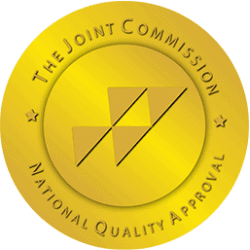What is Self Harm?
Self-harm, often characterized by the intentional infliction of bodily injury, is a complex behavioral phenomenon that has garnered increased attention in contemporary psychological and medical discourse. This act, which primarily manifests as cutting, burning, or other forms of self-injury, serves as a coping mechanism for many individuals grappling with emotional distress, trauma, or mental health issues. To effectively understand self-harm, it is essential to explore its definitions, underlying motivations, common misconceptions, potential consequences, and treatment options.
The term “self-harm” encompasses a broad spectrum of behaviors that involve the deliberate causing of harm to oneself. Although the most commonly recognized form is cutting the skin with sharp objects, self-harm can also include burning, hitting oneself, or engaging in behaviors such as hair-pulling or restriction of food intake. It is vital to note that self-harm is distinct from suicidal behaviors, although there is often a fine line between the two. While some individuals may engage in self-injurious behaviors as a method of coping with overwhelming emotions or psychological pain, others may utilize these actions as a means to facilitate a desire for self-inflicted death.
One of the primary motivations for self-harm is the experience of intense emotional pain, which individuals may struggle to articulate or process. Many people report feeling an overwhelming sense of sadness, anger, or frustration, and engaging in self-harm can paradoxically provide a temporary relief from these feelings. This relief can stem from a variety of sources; for instance, physical pain can momentarily distract from emotional pain, or the act of self-harm can provide a semblance of control in situations where individuals feel powerless. Self-harm may also serve as a communicative tool for expressing distress to others, albeit in a non-verbal manner, as many individuals find it challenging to vocally express their emotional turmoil.
Understanding the prevalence of self-harm is crucial in fostering a comprehensive awareness of this phenomenon. Statistics indicate that self-harm is particularly prevalent among adolescents and young adults, with studies suggesting that approximately 17% of teenagers engage in self-injurious behavior at some point in their lives. The prevalence is significantly higher among individuals diagnosed with mental health disorders, including depression, anxiety, and borderline personality disorder. Furthermore, societal factors, such as bullying, trauma, and adverse childhood experiences, can contribute to the likelihood of engaging in self-harm.
Despite its prevalence, there are several misconceptions surrounding self-harm that can impede understanding and lead to stigma. One common myth is that individuals who self-harm are merely seeking attention or attempting to manipulate others. This perspective, often rooted in misunderstanding, can deter individuals from seeking the help they need and can exacerbate feelings of isolation and shame. In reality, self-harm often stems from deep emotional distress and is frequently a subject of secrecy. Moreover, individuals may engage in self-harm without any desire for attention, viewing it instead as a private means of coping with their suffering.
The consequences of self-harm extend beyond the physical injuries sustained. Individuals who engage in self-injurious behaviors are at an elevated risk for developing more severe mental health issues, including depression and anxiety disorders. There is also the potential for long-term physical repercussions, including scarring, infections, or increased risk of future self-harm incidents. Additionally, self-harm can have detrimental effects on relationships, as individuals may struggle to communicate their emotional struggles with friends, family, or partners.
Addressing self-harm necessitates a multifaceted approach to treatment that takes into account the underlying causes and individual circumstances. Therapeutic interventions, such as cognitive-behavioral therapy (CBT) and dialectical behavior therapy (DBT), have shown efficacy in helping individuals manage emotional regulation and develop healthier coping mechanisms. Support groups and peer-led initiatives can also provide vital avenues for individuals to share their experiences and receive support in a non-judgmental environment.
What Causes Self Harm?

At the core of many self-harming behaviors lies an intricate relationship between psychological distress and emotional regulation. Numerous studies have indicated that individuals who self-harm often grapple with issues such as depression, anxiety, and borderline personality disorder. For these individuals, physical pain can serve as a temporary release or distraction from overwhelming internal experiences. In high-stress situations or during heightened emotional states, self-harm may appear as an accessible means of regaining a semblance of control. As mental health professionals have noted, self-injury can be viewed as a misguided coping mechanism, an attempt to translate inner turmoil into a tangible experience.
Furthermore, trauma plays a significant role in the etiology of self-harm. Many individuals who engage in self-injurious behaviors have histories of emotional, physical, or sexual abuse, leading to complex trauma responses. The correlation between trauma exposure and self-harm is profound; for some, the act of self-harm serves as a means to express unresolved grief, anger, or feelings of unworthiness. Additionally, traumatic experiences can hinder an individual’s ability to establish healthy coping strategies, further increasing the likelihood of resorting to self-injury. This cycle of trauma and self-harm highlights the need for trauma-informed care in therapeutic settings, emphasizing the importance of addressing the underlying psychological wounds that may promote self-injurious behaviors.
Social factors also contribute significantly to the prevalence of self-harm, particularly in the context of peer influence and societal expectations. Adolescents often face intense pressures to conform to social norms, leading to feelings of inadequacy or alienation. The quest for acceptance in a world marked by high expectations can exacerbate emotional distress, prompting some to engage in self-harm as a form of self-punishment or to cope with feelings of unworthiness. Moreover, the rise of social media and online platforms has further complicated this dynamic. The pursuit of perfection perceived through curated online personas can lead to negative self-comparisons, triggering mental health crises that may manifest through self-injurious behaviors.
Cultural contexts should also be considered when examining the causes of self-harm. Different cultures perceive and respond to emotional distress in varied ways, affecting how individuals navigate their feelings and seek help. In some societies, mental health issues carry a stigma, discouraging individuals from discussing their struggles openly. This cultural silence can contribute to isolation and exacerbate feelings of hopelessness, potentially leading to self-harming behaviors as a desperate cry for help. Therefore, understanding the sociocultural environment in which an individual operates is crucial for comprehending the complexities of their self-harm behavior.
Additionally, one must not overlook the biological underpinnings that may predispose certain individuals to self-harming behaviors. Research suggests that genetic factors and neurobiological processes may influence an individual’s susceptibility to mood disorders and impulsive behaviors. Neurotransmitter imbalances, particularly involving serotonin and dopamine, have been linked to both mood dysregulation and self-injurious behaviors. Understanding these biological factors can provide a more comprehensive view of why some individuals engage in self-harm, particularly in conjunction with the psychological and social factors previously discussed.
Self-harm is a multifaceted behavior that emerges from a confluence of psychological, social, cultural, and biological factors. The intricate interplay of these dimensions underscores the necessity for a holistic approach to prevention and intervention. Addressing self-harm requires not only understanding the individual’s emotional struggles but also creating supportive environments that foster open discussions about mental health. By illuminating the causes and contexts of self-harm, society can work towards developing more effective strategies for prevention, treatment, and support for those in distress. Ultimately, it is imperative to cultivate a deeper empathy and understanding surrounding self-harm, recognizing it not merely as a behavior but as a signal of profound emotional suffering.
The Most Common Conditions that Lead to Self Harm
Self-harm, often manifesting as the intentional infliction of pain or injury to oneself, is a complex behavior that indicates significant underlying emotional distress. This phenomenon is not a discrete psychiatric condition but rather a behavior that can manifest across various mental health disorders. An exploration of the mental health conditions associated with self-harm reveals a spectrum of psychological disturbances, including depression, anxiety disorders, borderline personality disorder, and post-traumatic stress disorder, among others. Understanding these connections is crucial for both prevention and treatment, ultimately aiding individuals in seeking the help they need.
Depression
Depression stands as one of the most common psychological conditions associated with self-harm. Individuals grappling with major depressive disorder often experience pervasive feelings of sadness, hopelessness, and worthlessness. The emotional pain can manifest in a manner where individuals believe that physical pain may serve as a temporary relief or a means of exerting control over their circumstances. Engaging in self-harm may offer them an outlet for intense emotional suffering that feels otherwise inescapable. Research indicates that nearly one in four adolescents with depression may engage in self-injurious behavior, highlighting the imperative for early intervention strategies targeting both depression and self-harm simultaneously.
Anxiety Disorders
Anxiety disorders, encompassing conditions such as generalized anxiety disorder, social anxiety disorder, and panic disorder, also correlate significantly with self-harming behaviors. The pervasive anxiety experienced by individuals with these disorders often precipitates a cycle of panic or overwhelming dread, leading them to seek ways to escape their emotional turmoil. Self-harm may serve as a maladaptive coping mechanism, allowing them to transform emotional pain into physical sensations that feel more controllable. Recent studies suggest that individuals with higher levels of anxiety exhibit greater tendencies toward self-harm, emphasizing the need for comprehensive therapeutic approaches that address both anxiety symptoms and self-injury behaviors.
Borderline Personality Disorder (BPD)
Borderline personality disorder is another condition frequently linked with self-harm, often characterized by emotional instability, impulsive behaviors, and a chronic fear of abandonment. Those with BPD may self-harm as a way to express intense emotional pain, communicate distress, or even manipulate situations in relationships. The prevalence of self-injurious behaviors among individuals with BPD is alarmingly high, with estimates indicating that approximately 70-80% of individuals with this disorder may engage in self-harm at some point in their lives. The impulsive nature of BPD significantly contributes to self-harming behavior, as individuals often struggle to modulate their emotional responses to perceived interpersonal stressors.
Post-Traumatic Stress Disorder (PTSD)
Individuals who have experienced trauma may also turn to self-harm as a coping strategy. Post-traumatic stress disorder (PTSD) can arise following exposure to a traumatic event, leading to debilitating symptoms such as flashbacks, heightened anxiety, and emotional numbing. For some individuals, the emotional turmoil linked to these symptoms can render them feeling detached from their body and emotions. As a result, self-harm may serve as a disturbing yet tangible method of reconnecting with themselves or as a way to externalize their pain. Studies demonstrate a strong correlation between trauma exposure and self-injurious behaviors, indicating the necessity for trauma-informed care approaches in treatment settings.
Emotional Regulation Difficulties
A common theme across these mental health conditions is difficulty with emotional regulation. Individuals who engage in self-harm often lack the skills to effectively manage and articulate their emotions, which can lead to impulsive behaviors aimed at either escaping emotional pain or expressing it in a visible manner. Therapeutic interventions, such as Dialectical Behavior Therapy (DBT), have shown promise in equipping individuals with skills to manage intense emotions more effectively, thus reducing instances of self-harm.
In summary, self-harm is a multifaceted behavior emerging from a variety of mental health conditions, each intertwined with a complex interplay of emotional distress, coping mechanisms, and interpersonal dynamics. Understanding the mental health conditions that lead to self-harm is imperative for mental health professionals, families, and communities to develop effective interventions and support systems. By fostering an environment of empathy, awareness, and comprehensive care, we can better address the underlying issues that contribute to self-harming behaviors, ultimately guiding individuals toward healthier coping strategies and a path to recovery.
Treatment at Ambrosia Behavioral Health for Those Struggling with Self Harm

Understanding Self-Harm
Self-harm is often a manifestation of underlying psychological distress, where individuals engage in harmful behaviors as a coping mechanism to manage emotional pain, regulate intense feelings, or express internal conflict. According to studies, individuals who self-harm may experience feelings of isolation, anxiety, depression, or trauma, thus necessitating a tailored treatment approach that addresses these complex emotional landscapes. Ambrosia Behavioral Health recognizes the intricacies of self-harm and, as a result, has developed a comprehensive treatment protocol that not only targets the behaviors associated with self-injury but also seeks to understand and heal the emotional wounds underlying such actions.
Therapeutic Approaches at Ambrosia Behavioral Health
At Ambrosia Behavioral Health, the treatment of self-harm is grounded in evidence-based practices that are individualized to meet the unique needs of each patient. The institution employs a blend of psychotherapy modalities, including Dialectical Behavior Therapy (DBT), Cognitive Behavioral Therapy (CBT), and trauma-informed care practices.
DBT, in particular, is a cornerstone of the treatment framework at Ambrosia Behavioral Health. Originally developed for individuals with borderline personality disorder, DBT has been widely effective for those who self-harm. This therapeutic approach focuses on teaching patients skills in emotional regulation, distress tolerance, interpersonal effectiveness, and mindfulness. By providing individuals with tools to cope with emotional distress without resorting to harmful behaviors, DBT fosters resilience and equips patients with the ability to navigate life’s challenges more effectively.
Cognitive Behavioral Therapy is also a vital component of the treatment at Ambrosia. CBT targets the cognitive distortions and maladaptive thought patterns that often accompany self-harming behaviors. Through cognitive restructuring, patients learn to identify negative thinking patterns and develop healthier cognitive habits, ultimately reducing the inclination toward self-harm as a means of coping. By promoting healthier self-perceptions and emotional responses, CBT cultivates a more adaptive approach to managing distressing emotions.
The incorporation of trauma-informed care practices acknowledges the potential traumatic experiences that may underlie self-harming behaviors. At Ambrosia Behavioral Health, practitioners are trained to understand and recognize the impact of trauma on an individual’s psychological state. This awareness allows clinicians to create a safe and supportive therapeutic environment, where clients can explore their experiences, express their feelings, and begin the healing process without fear of judgment or re-traumatization.
Holistic and Supportive Environment
Beyond individual therapy, Ambrosia Behavioral Health emphasizes the importance of a holistic treatment environment. Recognizing that self-harm is rarely an isolated issue, the institution offers group therapy sessions, family involvement, and integrative wellness practices that include mindfulness, yoga, and art therapy. These components create a supportive network for patients, fostering connections and allowing individuals to share their experiences with others who may be navigating similar struggles.
Family involvement in therapy is particularly crucial, as it helps to rebuild trust and understanding between individuals who self-harm and their loved ones. By engaging families in the treatment process, Ambrosia Behavioral Health promotes open communication, enhances support systems, and educates family members about the complexities of self-harm, which can significantly improve the chances of successful long-term recovery.
In summary, the treatment of self-harm at Ambrosia Behavioral Health is characterized by a comprehensive, evidence-based approach that prioritizes individualized care and support. By integrating various therapeutic modalities, emphasizing a trauma-informed framework, and fostering a holistic environment, Ambrosia Behavioral Health stands at the forefront of mental health treatment for individuals grappling with self-harming behaviors. Through this multifaceted approach, the institution not only addresses the immediate concerns associated with self-harm but also works diligently to heal the emotional wounds that give rise to such behaviors, ultimately guiding patients toward healthier coping mechanisms and a brighter future.
In Conclusion
In conclusion, self-harm is a multifaceted behavior deeply rooted in emotional pain and psychological distress. Understanding its complexities—its motivations, prevalence, misconceptions, and consequences—is essential in fostering empathy and effective treatment. By shifting the narrative surrounding self-harm from one of stigma and misunderstanding to one of awareness and support, society can create a more conducive environment for healing and recovery for those affected by this challenging behavior.
Ambrosia stands at the cutting edge of mental health and addiction treatment. Since 2007 Ambrosia has been the nation’s leader in adult and adolescent behavioral healthcare maintaining a strong focus on neuroscience and research fueling their advanced treatment methods. If you or someone you know is struggling reach out today and we will provide you with exemplary customer service and a truly effective treatment experience.
Additional Resources for Families Regarding Mental Health and Substance Abuse:
SAMHSA: Substance Abuse and Mental Health Services Administration
NAMI: National Alliance on Mental Illness
Our admissions team is standing by 24/7 to help you in times of crisis and to answer any of your questions.








